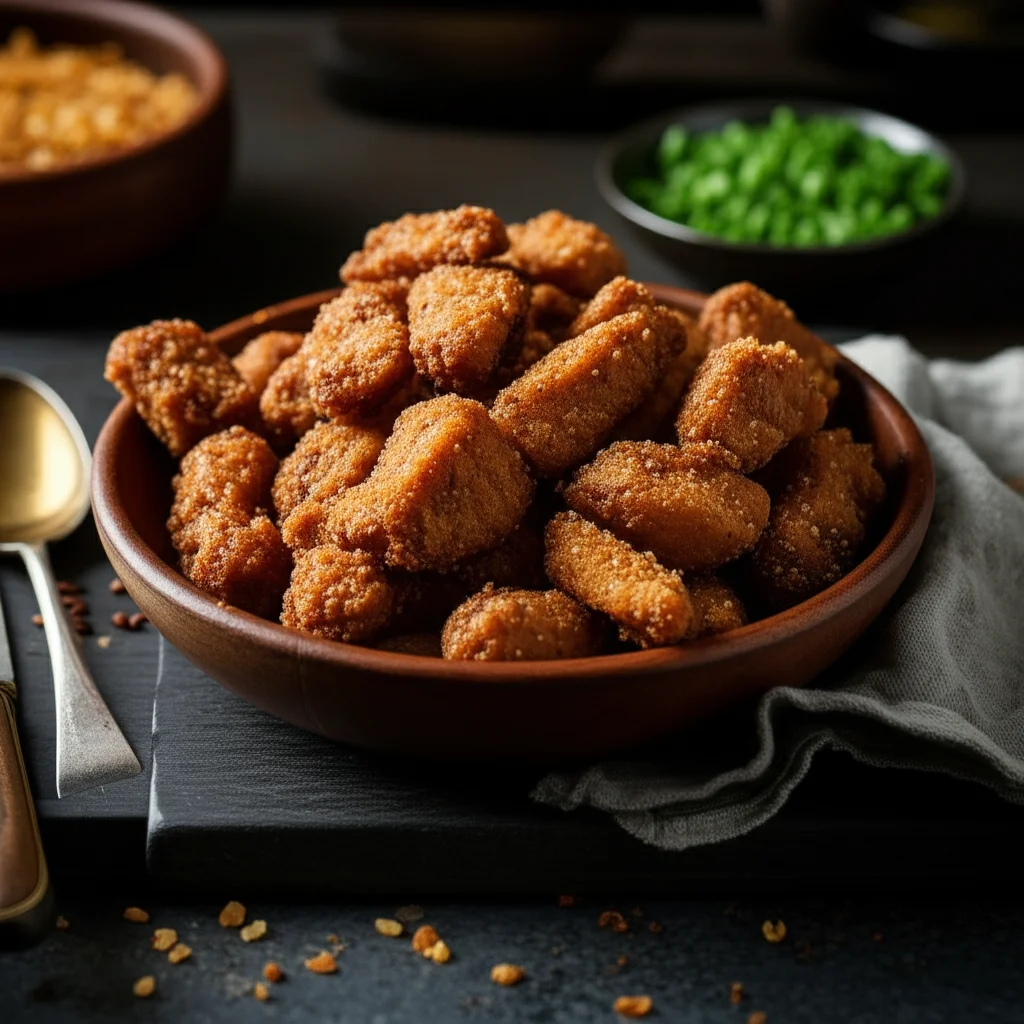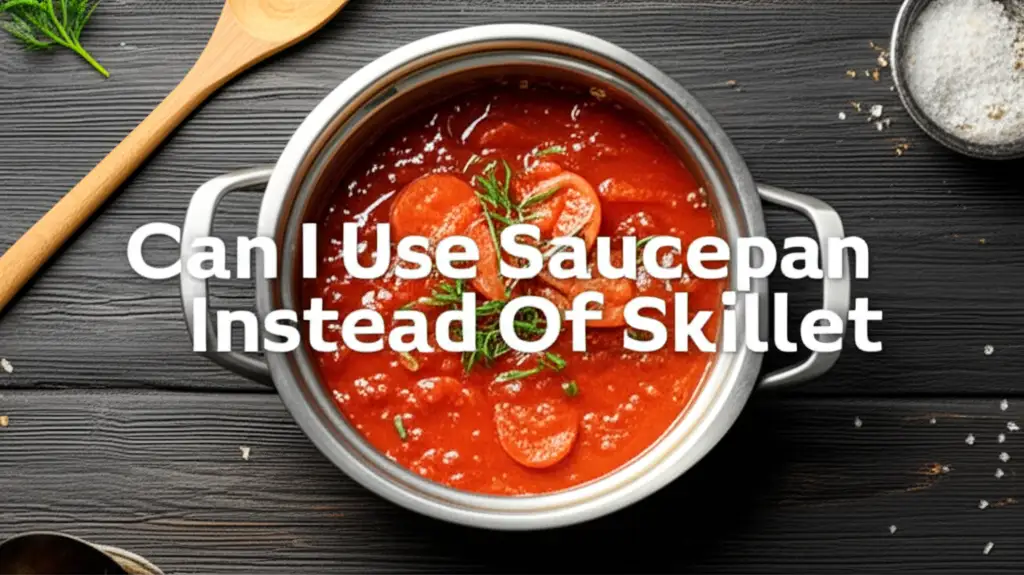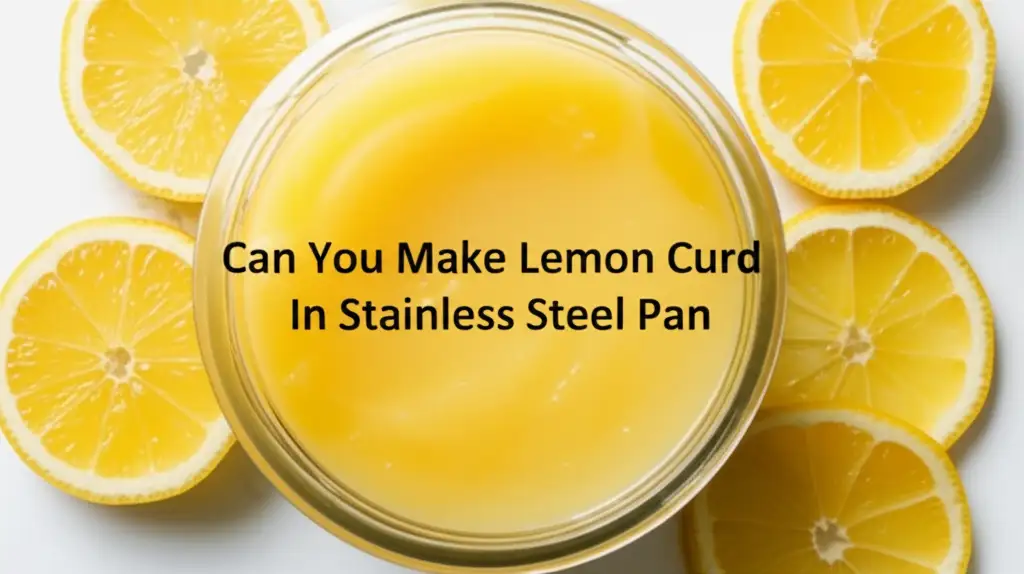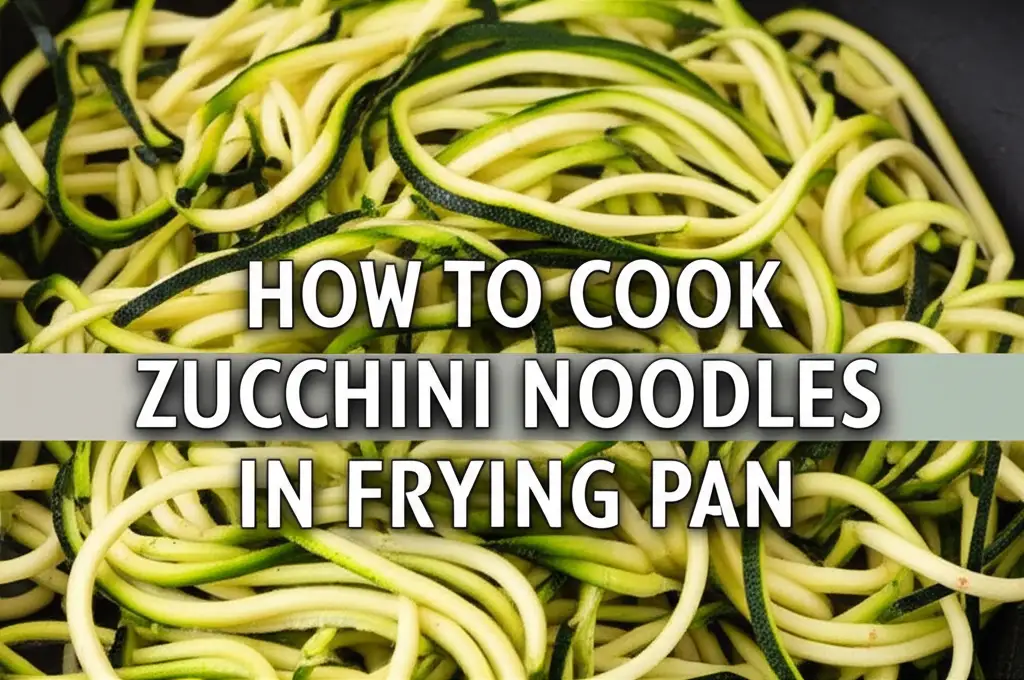· Katria Melrose · Cooking Tips · 18 min read
Can You Use Non Stick Pan For Caramel
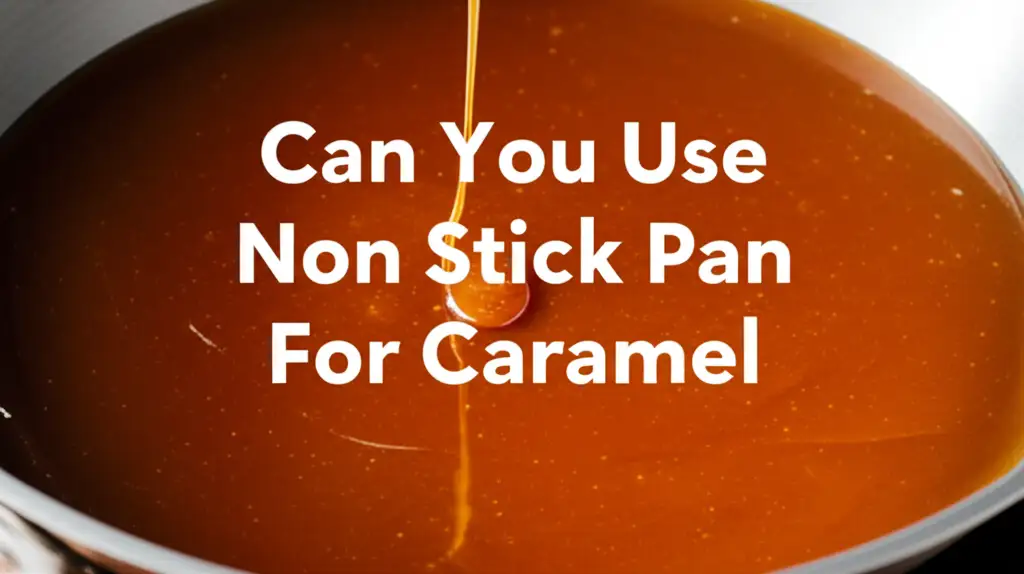
Can You Use Non-Stick Pan For Caramel?
Making caramel at home often feels like a kitchen magic trick. You melt sugar, watch it transform, and hope it turns into that beautiful golden, gooey perfection. One of the first questions many home cooks ask is about the right pan. Specifically, can you use non-stick pan for caramel? It seems logical; if it stops food from sticking, it should be perfect for a notoriously sticky substance like sugar.
However, the answer is not as simple as a yes or no. While technically possible, using a non-stick pan for caramel comes with specific challenges. These challenges can make the process more difficult and even risk the quality of your caramel or the lifespan of your pan. This article will explore the science of caramel, the properties of non-stick pans, and why traditional cookware often wins for this sweet task. We will also cover how to proceed if a non-stick pan is your only option, and offer tips for making sure your caramel is a success. My aim is to give you clear guidance for your caramel adventures.
Takeaway
- Avoid Non-Stick: It is generally not recommended to use a non-stick pan for caramel.
- Heat Sensitivity: Non-stick coatings are not designed for the high, sustained heat required for caramel.
- Uneven Heating: Many non-stick pans heat unevenly, leading to burnt spots in the caramel.
- Pan Damage: High heat can damage the non-stick coating, releasing fumes or reducing the pan’s lifespan.
- Best Alternatives: Stainless steel or copper pans are ideal for consistent, perfect caramel.
You can use a non-stick pan for caramel, but it is not the ideal choice. Non-stick coatings typically struggle with the high, sustained heat needed for sugar to caramelize properly. This can lead to uneven cooking and potential damage to your pan. For best results, I recommend using a heavy-bottomed stainless steel pan instead.
Understanding Caramel: The Sweet Science of Sugar Transformation
Caramelization is a fascinating process. It involves heating sugar until it breaks down and undergoes a series of chemical reactions. These reactions create new compounds, giving caramel its distinct nutty flavor and golden-brown color. This transformation occurs at very high temperatures, typically starting around 320°F (160°C).
The type of sugar you use matters. Sucrose, common table sugar, is most often used. As it heats, water evaporates, and the sugar molecules begin to rearrange. They form complex polymers, which are responsible for the rich flavor and deep color we associate with caramel. This process is delicate and requires precise temperature control. A slight error can lead to a burnt, bitter mess.
Heat distribution is crucial. The sugar needs to heat evenly across the entire surface of the pan. If some parts get hotter than others, they will burn before the rest of the sugar has even melted. This is why a pan with good heat conductivity is essential. Achieving the perfect caramel texture and flavor depends on maintaining a steady and uniform temperature throughout the cooking process. Without even heat, crystallization or burning can become major problems.
Non-Stick Pan Technology: What Makes Them “Non-Stick”?
Non-stick pans are kitchen staples for many. Their primary feature is a special coating that prevents food from adhering to the surface. This coating is typically made from polytetrafluoroethylene (PTFE), commonly known as Teflon. Other non-stick materials include ceramic or silicone-based polymers. These coatings create a very smooth, low-friction surface.
The “non-stick” property comes from the molecular structure of these materials. They have a very low surface energy. This means that liquids and food fats do not spread out easily over the pan. Instead, they bead up, making it hard for food particles to grab onto the surface. This makes cooking and cleaning much easier for everyday tasks like frying eggs or pancakes. I personally find them very useful for delicate foods.
However, these coatings have limitations. They are sensitive to high temperatures. Most non-stick pans are safe up to about 500°F (260°C). Beyond this, the coating can degrade, release fumes, or lose its non-stick properties. They also scratch easily. Metal utensils can damage the delicate surface, leading to chips and flakes. This sensitivity to high heat and physical damage makes them less ideal for demanding cooking tasks. Knowing these limitations is key to using them correctly and safely.
The Challenges of Using Non-Stick for Caramel
Using a non-stick pan for caramel presents several significant challenges. The unique demands of caramelization often conflict with the properties of non-stick coatings. It is a balancing act that often tips against the pan. I have found this out through personal experience.
First, caramel requires very high heat. Sugar needs to reach temperatures well above the safe operating range for many non-stick coatings. When you push a non-stick pan to these extreme temperatures, the coating can start to break down. This not only destroys the pan’s non-stick properties but can also release potentially harmful fumes into your kitchen. It is a risk not worth taking for just one recipe. You can learn more about this by reading why you should not use non-stick pan.
Second, non-stick pans often distribute heat unevenly. Their thin construction and specialized coatings can create hot spots. These areas heat up much faster than others. For caramel, this is a disaster. Parts of your sugar will burn while other parts are still melting. This leads to bitter, acrid flavors in your final product. Caramel needs uniform heating to prevent crystallization and achieve a consistent color.
Third, the non-stick surface itself can be a problem. While it prevents sticking, it also makes it harder to gauge the color of the caramel. The dark coating can obscure the true shade of the sugar. This means you might overcook or undercook your caramel without realizing it. Also, any stirring required must be done with non-abrasive utensils, such as silicone or wood. Using metal spoons will scratch and damage the coating. It can be tempting to use a metal spoon, but resist the urge. I have seen pans ruined this way. Therefore, can we use steel spoon in non-stick pan is a question you must consider carefully for your pan’s longevity.
Why Traditional Pans Excel for Caramel
When it comes to making perfect caramel, traditional pans truly shine. These pans are often made from materials like stainless steel or copper. They offer distinct advantages over non-stick options for high-temperature cooking tasks. I always recommend these for serious caramel makers.
Stainless steel is a popular choice for caramel. It conducts heat well and heats very evenly. This even heat distribution is crucial for preventing hot spots that can burn your sugar. Stainless steel pans are also durable. They can withstand the high temperatures required for caramelization without warping or degrading. You do not need to worry about the pan releasing fumes or losing its properties. Their lighter color also allows you to accurately monitor the caramel’s color development. This makes it easier to pull the sugar off the heat at just the right moment.
Copper pans are another excellent option. Copper is an exceptional heat conductor, even better than stainless steel. It heats up very quickly and evenly. This gives you precise control over the temperature. Chefs often prefer copper for delicate sauces and confectionery. However, copper pans can be expensive and require more care. They need to be lined with tin or stainless steel as copper can react with acidic foods. Despite the higher cost and maintenance, the performance for caramel making is outstanding.
Heavy-bottomed pans, regardless of material, are always preferred. A thick base helps to absorb and distribute heat more uniformly. This prevents scorching the sugar at the bottom. The extra mass also helps the pan retain heat more consistently. This reduces temperature fluctuations when you add ingredients like butter or cream. For these reasons, I always reach for my heavy stainless steel saucepan when caramel is on the menu.
Best Practices If You Must Use a Non-Stick Pan
Sometimes, a non-stick pan is the only option available. If you find yourself in this situation, you can still attempt to make caramel. However, you must proceed with extreme caution and follow specific best practices. My advice is to manage your expectations and prioritize safety.
First, use the lowest possible heat setting. This is critical to prevent overheating the non-stick coating. Sugar melts and caramelizes at very high temperatures. You will need to be patient. Let the sugar melt slowly and gradually. Resist the urge to crank up the heat. High heat can quickly damage the pan.
Second, avoid stirring the sugar directly. When making dry caramel (sugar alone), let it melt undisturbed. If making wet caramel (sugar with water), you can gently stir to dissolve the sugar. Once it starts to boil and thicken, stop stirring. Stirring can cause crystallization, which is when sugar crystals reform and ruin the smooth texture. Gently swirling the pan is a better way to distribute heat.
Third, use only silicone or wooden utensils if you must touch the sugar. Never use metal utensils in a non-stick pan. Metal will scratch and damage the delicate coating. This compromises the pan’s non-stick properties and can lead to flaking. Even for stirring, a heat-resistant silicone spatula is a safer choice. If your pan somehow gets burnt, it’s good to know how to clean a burnt non-stick pan properly.
Finally, monitor the caramel color constantly. Non-stick pans can make it hard to see the true color. Remove the pan from the heat earlier than you think necessary. Caramel continues to cook from residual heat. It is better to have slightly lighter caramel than burnt caramel. Always remember to cool the pan down quickly. Placing it on a damp towel or in an ice bath can stop the cooking process. Also, be careful when cleaning your non-stick pan. Improper cleaning can reduce its effectiveness over time. If you want to know more about cleaning, check out how to clean non-stick frying pan.
Alternative Cookware for Perfect Caramel
If you are serious about making caramel, investing in the right cookware is worthwhile. Several types of pans perform exceptionally well for this delicate task. They offer the heat control and durability that non-stick pans lack. I have found that the right pan makes all the difference.
Stainless Steel Pans: These are perhaps the most popular and versatile choice. Look for a heavy-bottomed stainless steel saucepan. The thick base ensures even heat distribution, preventing hot spots and scorching. Stainless steel is also non-reactive, meaning it will not impart any metallic taste to your caramel. Its light color allows you to easily monitor the caramel’s progression from clear sugar to amber. They are also incredibly durable and easy to clean. Most stainless steel pans can withstand very high temperatures without damage.
Copper Pans: Copper pans are excellent heat conductors. They respond quickly to temperature changes, giving you precise control over the caramelization process. This responsiveness is a huge advantage for delicate sugar work. However, copper pans are generally more expensive and require more care. They often have tin or stainless steel linings, as raw copper can react with food. If you are a dedicated confectioner, a copper pan is a great investment.
Cast Iron Skillets (with caution): While not typically the first choice, a well-seasoned cast iron skillet can work for caramel. Cast iron heats very evenly and retains heat exceptionally well. The challenge is its slow heating and cooling time. This makes it harder to stop the caramelization process quickly. You must remove it from the heat earlier than other pans. Also, cast iron can be reactive if not properly seasoned. I would only recommend this if you are experienced with cast iron and understand its properties. Always ensure your cast iron is clean and well-seasoned to prevent sticking.
Regardless of the material, always choose a pan with tall sides. This prevents the hot, bubbling sugar from boiling over. A larger surface area at the bottom can also help the sugar melt and caramelize more evenly. My best advice is to select the heaviest pan you own.
Troubleshooting Common Caramel Issues
Making caramel can be tricky. Even with the right pan, you might encounter common problems. Knowing how to address them can save your batch of sugar. I have certainly faced these issues myself and learned how to fix them.
Crystallization: This is perhaps the most frustrating issue. It happens when sugar crystals reform in your syrup, turning it grainy and cloudy. Even a single sugar crystal can trigger a chain reaction. To prevent it, ensure your sugar is completely dissolved before it starts to boil. You can wipe down the sides of the pan with a wet pastry brush. This washes down any stray sugar crystals. Avoid stirring vigorously once the sugar starts to melt and boil. Gently swirling the pan is usually enough to distribute the heat. Adding a small amount of acid, like lemon juice or cream of tartar, can also help prevent crystallization.
Burning: Caramel goes from perfectly golden to burnt very quickly. This often happens due to high heat or uneven heat distribution. To prevent burning, use a heavy-bottomed pan. This ensures even heat. Cook the sugar over medium-low heat. Patience is key. Do not rush the process. If using a non-stick pan, be extra vigilant with heat. Remove the pan from the heat as soon as it reaches your desired color. Remember, residual heat will continue to cook the caramel for a short while. You can place the pan in an ice bath to stop the cooking immediately.
Not Reaching Temperature/Too Light: Sometimes, your caramel just will not darken. This usually means the heat is too low or the process is taking too long. Ensure your burner is providing consistent heat. You might need to slightly increase the heat, but do so gradually. If you are using water, ensure it has completely evaporated. The sugar must reach its caramelization temperature. A candy thermometer can be very helpful here. It takes away the guesswork. For best results, use a reliable thermometer to track the sugar’s temperature.
Sticky Mess: Caramel is inherently sticky. However, if it sticks excessively to your pan, it could be a sign of improper pan choice or technique. While non-stick pans are supposed to prevent this, high heat can damage them. If your pan is losing its non-stick properties, it might be time to replace it. A good quality, heavy-bottomed stainless steel pan will release caramel easily once it cools slightly. For persistent sticking, you might ask yourself why does my new non-stick pan stick? The answer often lies in overheating or improper care.
Maintaining Your Non-Stick Pan After Caramel Making
If you chose to use a non-stick pan for caramel, proper cleaning and maintenance are essential. This will help preserve the pan’s lifespan and effectiveness. Overheating and rough cleaning are common causes of damage. I always make sure to treat my non-stick pans with care.
First, let the pan cool completely before cleaning. Thermal shock can warp the pan or damage the non-stick coating. Never plunge a hot non-stick pan into cold water. Once cool, use warm, soapy water and a soft sponge or cloth. Avoid abrasive scrubbers, steel wool, or harsh chemicals. These can scratch the delicate coating. For any stubborn sticky bits, let the pan soak for a while. Warm water helps to dissolve hardened sugar.
Second, be gentle with dried caramel. If caramel hardened in the pan, do not try to scrape it off with metal. Instead, fill the pan with water and bring it to a very gentle simmer on the stove. The warm water will gradually dissolve the caramel. This makes it easy to wipe away. This method is much safer for the coating than forceful scrubbing. It is similar to how you would clean other baked-on foods.
Third, handwashing is always preferred for non-stick pans. While some non-stick pans are advertised as dishwasher safe, the harsh detergents and high heat of dishwashers can degrade the coating over time. Washing by hand is gentler and extends the life of your pan. If you’re wondering can you wash non-stick pan in dishwasher, the answer is often yes, but it is not ideal for longevity.
Finally, proper storage is important. Avoid stacking non-stick pans without protection. Use pan protectors or paper towels between them. This prevents scratches from other cookware. Taking these simple steps will ensure your non-stick pan remains effective for its intended uses. If your non-stick pan has seen better days, you might wonder can I make my frying pan non-stick again. Unfortunately, a damaged non-stick coating usually cannot be fully restored.
Safety Considerations with Non-Stick Coatings at High Heat
Using non-stick pans at high temperatures, especially for tasks like caramel making, brings up important safety considerations. The main concern relates to the chemicals used in the non-stick coatings, primarily PTFE. I always advise caution when pushing these pans to their limits.
PTFE coatings are generally stable and safe for cooking below certain temperatures. However, when heated above approximately 500°F (260°C), they can begin to decompose. This decomposition can release chemical fumes. These fumes can cause flu-like symptoms in humans, a condition sometimes called “polymer fume fever” or “Teflon flu.” While typically temporary, it is best to avoid exposure. Pets, particularly birds, are much more sensitive to these fumes and can be seriously harmed or even killed by them.
Caramelization often occurs at temperatures that approach or exceed this decomposition point. This is one of the primary reasons I do not recommend non-stick pans for caramel. The risk of exposing yourself or your family to these fumes increases significantly. Even if your pan seems fine, it might be releasing microscopic particles or gases. Always ensure good ventilation when cooking, especially when using non-stick cookware at higher heats.
Modern non-stick pans are generally free of PFOA (perfluorooctanoic acid), a chemical previously used in the manufacturing process of some non-stick coatings. PFOA has been linked to various health concerns. Most reputable brands have phased it out. However, the concern regarding PTFE decomposition at high temperatures still remains. Always check the manufacturer’s recommendations for maximum safe temperatures for your specific non-stick pan. Prioritizing safety means choosing the right tool for the job. For caramel, this often means opting for stainless steel or copper.
FAQ Section
Q1: Is it impossible to make caramel in a non-stick pan? No, it is not impossible, but it is certainly not ideal. Non-stick pans are challenging for caramel. They can lead to uneven heating and potential damage to the coating due to the high temperatures required. I recommend against it for consistent results and pan longevity.
Q2: What is the best type of pan for caramel? A heavy-bottomed stainless steel pan is the best choice for making caramel. It provides excellent, even heat distribution and can withstand the high temperatures without issue. Copper pans are also superb due to their superior heat conductivity, though they require more care.
Q3: How do I clean burnt caramel from a pan? To clean burnt caramel, fill the pan with water, add a small amount of baking soda if desired, and gently simmer it on low heat. The water will dissolve the hardened sugar. Once dissolved, the pan will be easy to clean with a soft sponge and dish soap.
Q4: Can high heat ruin a non-stick pan? Yes, absolutely. High heat is the main enemy of non-stick coatings. Exceeding the manufacturer’s recommended temperature can cause the coating to degrade, flake, release fumes, and lose its non-stick properties. This significantly shortens the pan’s lifespan.
Q5: What causes caramel to crystallize? Crystallization happens when sugar molecules reform into hard crystals. This is often caused by impurities, undissolved sugar crystals, or stirring the sugar too much once it begins to boil. Preventing stray sugar crystals and avoiding excessive stirring are key.
Q6: Can I use a wooden spoon with a non-stick pan for caramel? Yes, a wooden spoon or a heat-resistant silicone spatula are good choices. You should never use metal utensils in a non-stick pan. Metal can scratch and damage the non-stick coating. This will make your pan less effective over time.
Conclusion
So, can you use non-stick pan for caramel? While technically possible, my advice is to avoid it if you can. The unique demands of caramel making, particularly the high and consistent heat required, often clash with the limitations of non-stick coatings. These pans are not designed for such intense, sustained temperatures. Using them risks uneven caramelization, potential burning, and most importantly, damage to your pan’s coating and possible release of fumes.
For the best results, safety, and ease, I strongly recommend using a heavy-bottomed stainless steel pan or even a copper pan for your caramel creations. These traditional materials offer superior heat distribution and durability. They will give you more control and a more consistent, beautiful caramel every time. If a non-stick pan is your only option, proceed with extreme caution, use very low heat, and avoid metal utensils. Prioritize safety and always ensure good ventilation. Ultimately, choosing the right tool for the job makes all the difference in the kitchen. Happy caramel making!


